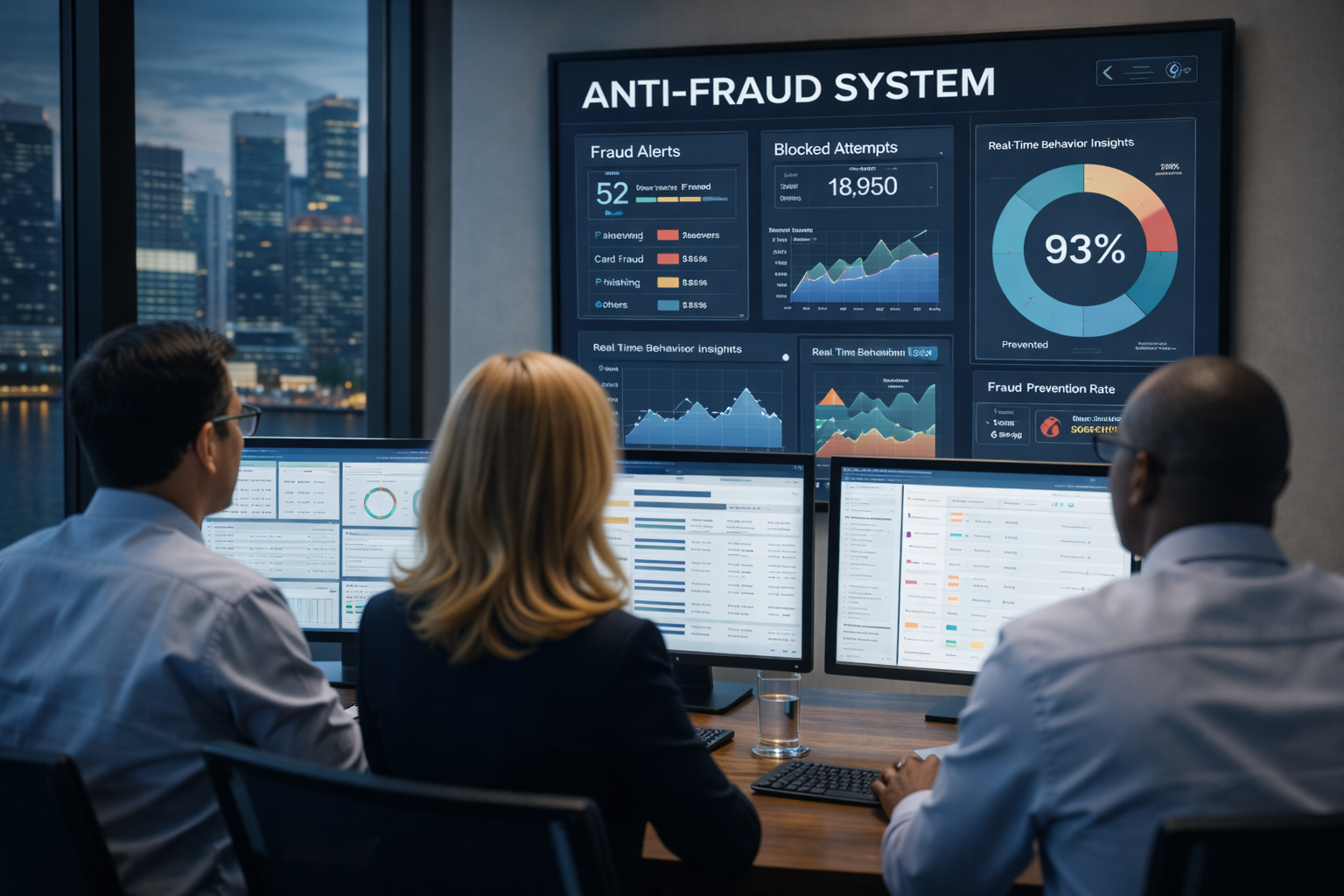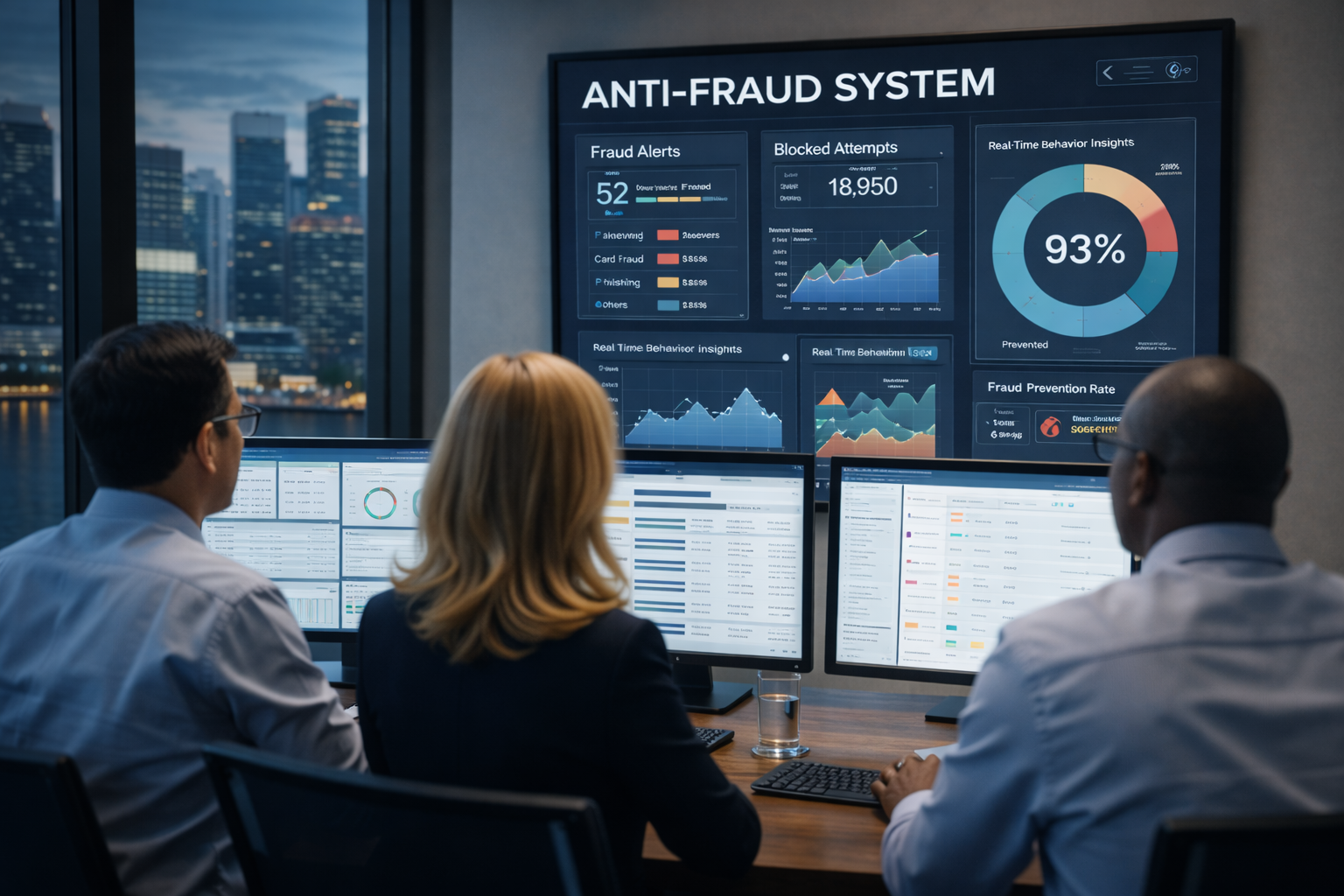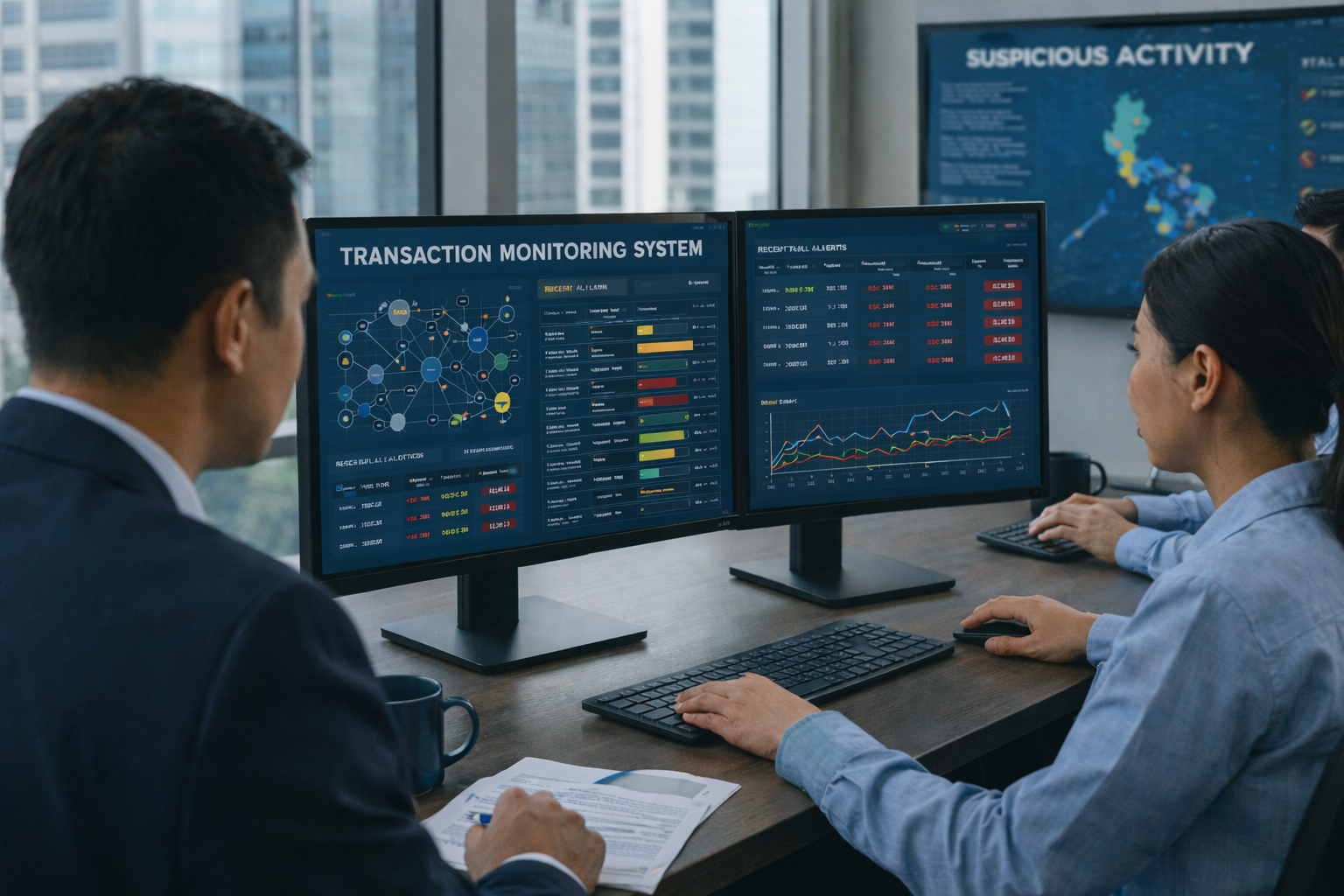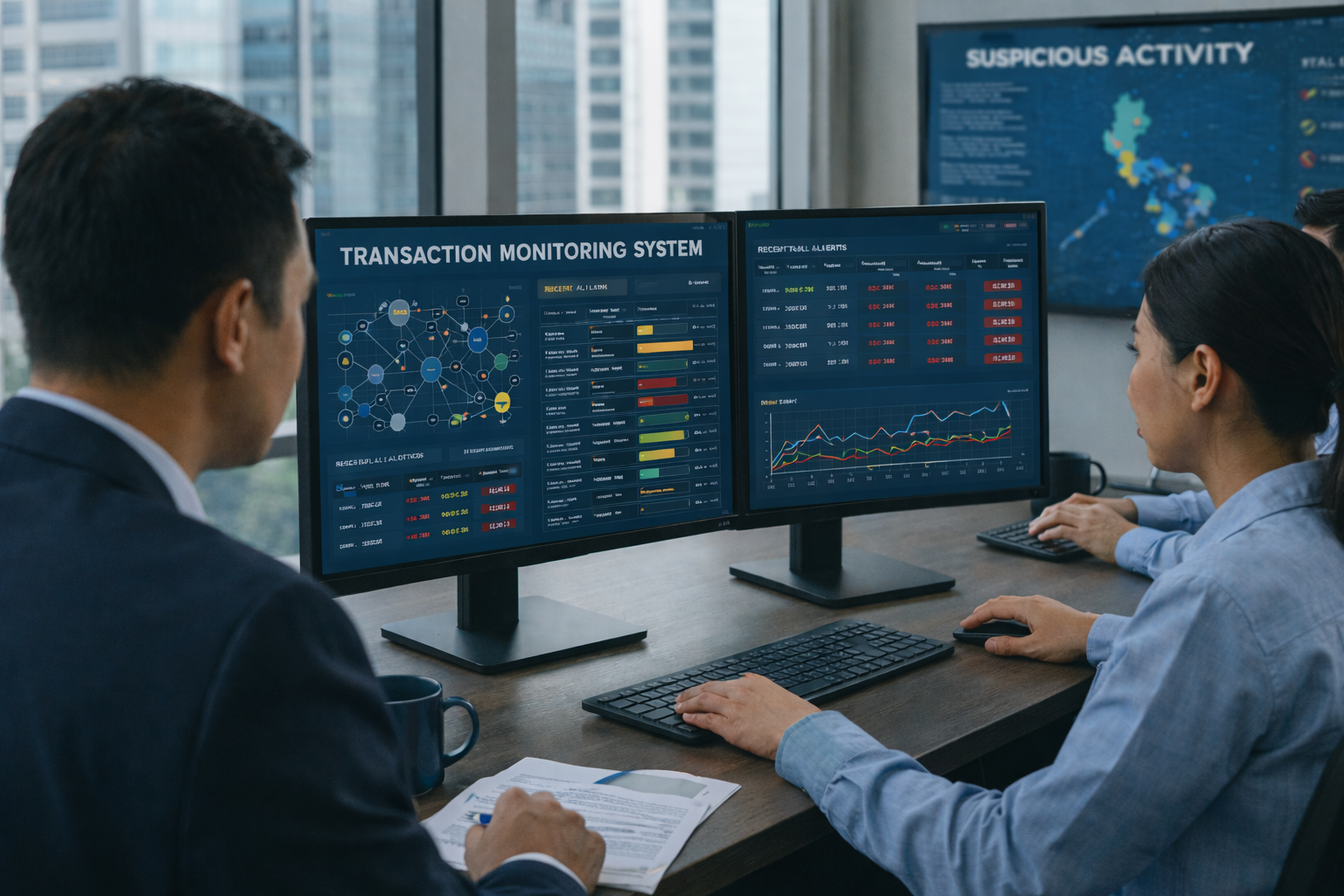Financial Crime Unmasked: Embezzlement vs. Laundering Showdown
.svg)
In the vast world of financial crimes, embezzlement and money laundering often become synonymous. But, they are not the same thing. Each represents a distinct kind of financial crime. Our aim in this article is to break down these concepts, making them easy to understand. We'll dive deep into what each term means and how they operate. We will also explore how financial institutions can address them.
What is Money Laundering? And How Does It Work?
Money laundering is the process of making illegally-obtained proceeds appear legal. This deceptive act is often portrayed in popular culture as a complex web of transactions intending to blur the origin of funds.
Stages of Money Laundering
- Placement: This initial stage involves introducing 'dirty money' into the financial system. This might be done through fragmented bank deposits to remain under the radar.
- Layering: In this phase, the money is moved around to create confusion. Layering in money laundering involves multiple transactions like withdrawals, deposits, or transfers across different accounts, often internationally.
- Integration: This is the final stage where 'cleaned' money is integrated into the legal economic system, making it hard to trace back to its illicit origins.
Did you know that the estimated amount of total money laundered annually around the world is 2-5% of the global GDP (USD 800 Billion – 2 trillion)? Read our blog for more such interesting Statistics on Money Laundering.
What is Embezzlement?
Embezzlement is an act where someone who has been entrusted with money or other assets misappropriates or steals them for their personal use. This crime usually involves someone within an organization, such as an employee, who abuses their position to divert funds.
Common Embezzlement Scenarios
- Payroll Schemes: Fraudulent addition of ghost employees or inflating hours to receive unwarranted payments.
- Expense Reimbursements: Claiming fake or inflated business expenses.
- Check Tampering: Redirecting company checks to oneself or to an accomplice.
Difference Between Money Laundering and Embezzlement
While both embezzlement and money laundering involve illicit handling of funds, their nature and purpose are fundamentally distinct.
Key Distinctions Between Money Laundering and Embezzlement
- Origin of Funds: In embezzlement, funds are sourced directly from within an organization. Money laundering, on the other hand, deals with disguising the origins of already acquired illegal funds.
- Intent: Embezzlement's primary intent is theft, while money laundering aims at giving an appearance of legitimacy to ill-gotten wealth.
- Involvement: Embezzlement usually involves an insider, while money laundering can involve external networks or organized crime groups.
{{cta('58ea1d4f-b253-495e-bbd9-fa69a2fa3417','justifycenter')}}
Practical Cases: Embezzlement and Money Laundering in the Real World
Both embezzlement and money laundering have left their mark on global economies, businesses, and individuals. Exploring a few real-world cases can offer a tangible understanding of these crimes.
Notable Embezzlement Cases
- Bernie Madoff's Ponzi Scheme: Possibly the most infamous embezzlement case, Madoff's fraudulent activities led to billions in losses for investors.
- Enron Scandal: While primarily known for its accounting fraud, embezzlement played a role as executives enriched themselves at the company's expense.
Infamous Money Laundering Instances
- The Zhenli Ye Gon Case: Chinese-Mexican businessman Zhenli Ye Gon was caught in a major money laundering operation involving vast sums from methamphetamine sales.
- The Danske Bank Scandal: This Danish bank faced scrutiny after €200 billion of suspicious transactions flowed through its Estonian branch.
The Broader Implications of Embezzlement and Money Laundering
As we delve deeper into the world of financial crimes, it becomes clear that the ripple effects of both embezzlement and money laundering extend far beyond the initial illicit activities.
Embezzlement's Impact on Organizations and Individuals
- Financial Loss: The direct loss from the theft can lead to financial instability or even bankruptcy for smaller enterprises.
- Reputation Damage: Companies suffer a hit to their credibility, leading to a potential loss of clients, partners, or investors.
- Employee Morale: Trust within the organization might erode, leading to decreased morale and productivity.
Global Consequences of Money Laundering
- Economic Distortion: Money laundering can skew economic data and, consequently, policy decisions.
- Increased Crime Rates: By providing a veil of legitimacy, money laundering can indirectly facilitate other criminal activities.
- Terrorist Financing: Money laundering plays a critical role in obfuscating the tracks of those who finance terrorist activities.
The Human Aspect: Victims of Financial Crimes
Behind the headlines and staggering figures lie real people affected by embezzlement and money laundering. The consequences of these crimes often extend far beyond the initial monetary losses.
The Silent Victims of Embezzlement
- Employees: When companies face financial difficulties due to embezzlement, layoffs often ensue, leaving hardworking employees without a paycheck.
- Investors and Shareholders: Their trust is betrayed when they realize that their investments have been siphoned off.
- Customers and Clients: They may experience disruptions in services or increased costs as companies try to recover lost funds.
Collateral Damage of Money Laundering
- Economies: Laundered money can artificially inflate property prices, making housing unaffordable for average citizens.
- Businesses: Legitimate businesses can't compete with those propped up by laundered money, leading to an uneven playing field.
How to Prevent Money Laundering and Embezzlement?
For Money Laundering
- Implement stringent KYC (Know Your Customer) practices: Regularly update and verify client information.
- Continuous monitoring: Use advanced software for transaction monitoring to spot and report suspicious activities.
- Employee training: Ensure employees understand anti-money laundering regulations and are equipped to identify red flags.
For Embezzlement
- Regular audits: Conducting surprise internal and external audits can deter potential embezzlers.
- Separation of tasks: Make sure no worker has complete control over every part of important money transactions.
- Whistleblower policies: Encourage employees to report suspicious activities without fear of retaliation.
The Legal Framework Against Financial Crimes
Governments and international bodies have recognized the gravity of these offenses and have laid down strict regulations and penalties.
Legal Penalties for Embezzlement
- Restitution: Offenders may be ordered to pay back the amount they embezzled.
- Fines: Penalties can range from minor amounts to figures surpassing the embezzled sum.
- Imprisonment: Depending on the jurisdiction and the amount involved, embezzlers can face several years in prison.
Anti-Money Laundering Laws (AML)
- International Cooperation: The FATF (Financial Action Task Force) sets international standards for combating money laundering.
- Reporting Obligations: Financial institutions are mandated to report suspicious activities.
- Asset Forfeiture: Authorities can seize assets believed to be the product of crime.
Global Initiatives to Counter Financial Crimes
In response to the increasing complexity of financial crimes, various global initiatives have emerged to foster cooperation and information exchange.
United Nations' Efforts
The UN Office on Drugs and Crime (UNODC) has been instrumental in supporting countries in their fight against money laundering, offering training, resources, and policy guidance.
The Egmont Group
This network of Financial Intelligence Units (FIUs) from different countries collaborates on investigations, shares best practices, and promotes the role of FIUs globally.
Public Awareness and Its Role in Prevention
Increasingly, the general public is recognized as a valuable ally in combating financial crimes. Public awareness campaigns aim to:
- Educate on Red Flags: Helping people recognize signs of embezzlement or money laundering can lead to early detection.
- Encourage Reporting: Ensuring that people know where and how to report suspicions can disrupt criminal activities.
- Promote Ethical Behaviour: By emphasizing ethics in schools, workplaces, and society at large, the next generation can be better equipped to resist the allure of easy money.
Public Perception and the Role of Media
The media has a vital role in influencing how the public sees things. High-profile cases of embezzlement or money laundering often become hot topics, casting shadows over entire sectors or industries.
The Role of Whistleblowers
Whistleblowers are brave individuals who step forward to expose wrongdoing within organizations. Often working behind the scenes, they gather evidence and bring illicit activities, like fraud or corruption, into the open. Their actions play a pivotal role in ensuring companies and institutions remain honest and accountable.
However, their journey is not without challenges. Many whistleblowers face retaliation, threats, or even the loss of their jobs, making their contribution to transparency and justice all the more commendable.
Technological Evolution and Financial Crimes
As technology progresses, so do the methods used by criminals. Digital transformation has given birth to new channels for both embezzlement and laundering.
Cyber Embezzlement
With most financial transactions now online, cyber embezzlement has emerged as a new threat. By hacking into systems or using phishing methods, criminals divert funds into their accounts.
Crypto and Money Laundering
Cryptocurrencies, with their promise of anonymity, have become a favorite for money launderers. By moving illicit gains through crypto exchanges or using coin mixers, they seek to hide their tracks.
About Cryptolaundering
Future Outlook: Curbing Financial Crimes in the Digital Age
The fight against embezzlement and money laundering is ever-evolving. Future strategies will undoubtedly involve a blend of regulatory oversight, technological solutions, and international cooperation.
AI and Machine Learning
Advanced algorithms can now predict and detect unusual patterns, making it harder for criminals to operate unnoticed.
Blockchain Technology
While cryptocurrencies can be a tool for money launderers, the underlying blockchain technology can be leveraged for transparency, making illicit activities more challenging.
Final Words on Embezzlement vs. Laundering
The subtle intricacies between embezzlement and laundering are crucial in comprehending the broader landscape of financial malpractices. Armed with knowledge, individuals and organizations can better guard against falling prey to these crimes or unknowingly facilitating them.
Embezzlement and money laundering, though both financial crimes, have their unique attributes and implications. Understanding their nuances not only clarifies their differences but also helps in building effective prevention strategies. Awareness and proactive measures can safeguard individuals and businesses alike from the clutches of these sophisticated crimes.
Embezzlement and money laundering represent a constant battle between those upholding the law and those bending it for personal gain. The fight against embezzlement and money laundering is not just for regulators, law enforcement, or financial institutions. It's a collective responsibility. Awareness, technology, and international cooperation stand as our best tools in this unending struggle.
Frequently Asked Questions (FAQs)
What is money embezzlement?
Embezzlement refers to the theft or misappropriation of funds entrusted to one's care, often within an organizational setting.
How do people launder money?
Money laundering typically involves three stages: placement of funds into the financial system, layering through numerous transactions, and integration into the legitimate economy.
Why is it essential to distinguish between embezzlement and money laundering?
Differentiating between embezzlement and money laundering helps in ensuring accurate legal proceedings and appropriate punitive measures.
Can a single transaction involve both embezzlement and money laundering?
Yes, if someone illegally takes money (embezzles) and then tries to hide its origins (launders), it involves both crimes.
Who typically investigates embezzlement and money laundering cases?
Government agencies, like the Financial Crimes Enforcement Network (FinCEN) or the FBI, often investigate these financial crimes.
Experience the most intelligent AML and fraud prevention platform
Experience the most intelligent AML and fraud prevention platform
Experience the most intelligent AML and fraud prevention platform
Top AML Scenarios in ASEAN

The Role of AML Software in Compliance

The Role of AML Software in Compliance










